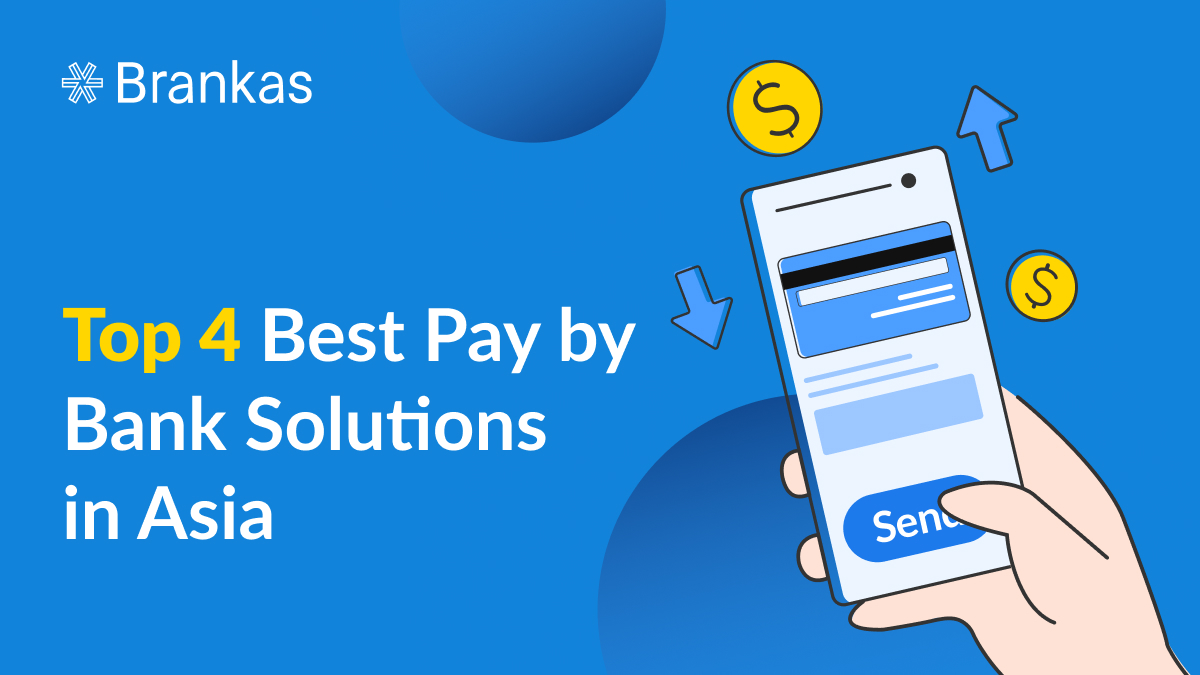The Asia-Pacific (APAC) region is leading in the adoption of cashless payments, according to the World Payments Report 2025. The widespread use of smartphones and e-commerce growth propelled the shift towards non-cash transactions. Consequently, there is a demand for more efficient and more secure payment methods. Pay by bank solutions are increasingly transforming payments as businesses and customers in the region continually look for a more frictionless experience.
What Exactly is Pay by Bank?
Pay by bank is now the more popular term for account-to-account (A2A) payments. It’s a payment method that allows consumers to pay for goods and services straight from their bank account instead of using a debit or credit card. Money may be sent to a business, another customer, or between a consumer’s own accounts. Recurring payment for utility or subscription bills is the most popular example of A2A payments.
Pay by bank is nothing new. It has been around for a long time, 50-plus years in some countries. In Asia, the COVID-19 pandemic, the development of real-time payment systems, and government initiatives are major factors in the renewed interest and usage of A2A payments.
Open banking plays a crucial role in facilitating pay by bank payments by leveraging technology to streamline transactions directly between bank accounts. It allows third-party providers to access bank data securely through APIs. Through open banking, A2A payments are becoming a convenient option for consumers and businesses.
Some of the benefits of pay by bank are:
- Lower costs by removing third parties that traditional payment methods require.
- Money is transferred quickly and in most cases, instantaneously.
- The strict security standards of banks make for safe transfers and reduce fraud risks.
- Enhanced customer experience. Consumers can make payments directly from their bank accounts without navigating through multiple platforms or wallets.
- Compliance with banking regulations.
- Users have direct control over their funds and reduce reliance on third-party services.
- Supports financial inclusion by providing access to underserved populations without complicated setups or high fees.
- Scalability for businesses. A2A payment solutions can lead to growth opportunities.
And the Top 4 Best Pay by Bank Solutions are…
PayNow
PayNow is a pioneering A2A payment solution that enables users in Singapore to transfer funds between bank accounts using their mobile numbers, national identification numbers (NRIC/FIN), or virtual payment addresses (VPA). It leverages the Fast and Secure Transfers (FAST) system to facilitate real-time interbank transfers.
Key features:
- Users can send and receive money in real time.
- PayNow supports QR code scanning for easy peer-to-peer transactions and merchant payments.
- The service is linked with Thailand’s PromptPay, enabling cross-border payments between the two countries.
- The platform is designed for simplicity, allowing users to link their bank accounts easily and perform transactions with minimal steps.
PayNow enhances user convenience and fosters financial inclusion by simplifying the payment process. Its integration with other regional systems boosts trade and commerce across borders.
PromptPay
PromptPay was launched by the Bank of Thailand as part of its national e-payment initiative. Users can make instant payments using their mobile phone, citizen ID, or bank account numbers.
Key features:
- PromptPay allows for immediate fund transfers between participating banks.
- The service offers low-cost transfers.
- PromptPay is used for various government services, including tax refunds and social welfare payments.
- Businesses can accept payments through PromptPay using QR codes
PromptPay’s focus on affordability and ease of use makes it a popular choice among Thai consumers. Its integration with government services further solidifies its role in promoting digital payments nationwide.
Unified Payments Interface (UPI)
The National Payments Corporation of India developed and launched UPI in 2016. It enables users to link multiple bank accounts to a single mobile application for seamless money transfers.
Key features:
- UPI facilitates real-time fund transfers between bank accounts, available 24/7.
- Users can link multiple bank accounts to a single UPI ID.
- UPI supports both P2P (peer-to-peer) and P2M (peer-to-merchant) transactions.
- Request to Pay feature allows users to send payment requests to others.
UPI’s user-friendly interface and robust features have made it one of the most widely adopted payment systems in India, facilitating over a billion transactions monthly. Its versatility caters to individual users and businesses.
Brankas
Brankas offers a convenient way to make direct bank transfers through its robust API. With solutions, such as Brankas Disburse, businesses can streamline disbursement operations, simplifying and accelerating payment processes by integrating with various banking systems and networks across APAC.
Key features:
- Brankas facilitates direct bank-to-customer transfers without passing through intermediaries.
- Customers have access to their growing network of banks in Southeast Asia.
- Brankas ensures transaction security with end-to-end encryption and compliance with local data privacy and regulatory requirements.
Brankas, PayNow, PromptPay, and UPI exemplify how technology is reshaping financial transactions. They cater to the evolving needs of consumers and businesses and drive the future of digital payments.
The Future of Pay by Bank Solutions in Asia
The road ahead for pay by bank solutions in Asia is positioned for significant growth and transformation. With the rapid advancement of technology and changing consumer preferences, A2A payments are becoming an increasingly viable option for businesses seeking to enhance their payment processes. The shift towards digital payments is not just a trend; it’s a fundamental change in how financial transactions are conducted across the region.
The shift to instant payment systems is particularly important in Asia. Many markets are still grappling with high transaction costs and efficiencies with traditional payment methods. Businesses can streamline their operations, reduce fees, and improve cash flow management by adopting pay by bank solutions.
Embracing A2A payments in business offers a competitive edge in a rapidly evolving market. These solutions provide a secure and cost-effective way to manage transactions, making them an attractive alternative to traditional card-based payments. As more consumers become comfortable with digital banking and mobile wallets, businesses that adopt these technologies will be better positioned to meet customer expectations and drive growth.
Businesses should consider integrating A2A payments into their operations to enhance their payment processes and to stay ahead in an increasingly digital economy. By doing so, they can unlock new opportunities for growth while providing their customers with the seamless payment experiences they demand.
Are you ready to elevate your payment processes?
Brankas’ Direct and Disburse can help streamline your operations and enhance customer experiences through seamless A2A payments. Our comprehensive APIs allow you to integrate secure, real-time payment capabilities directly into your applications, making it easier than ever for your customers to transact without intermediaries. Don’t miss out! Contact us today.


